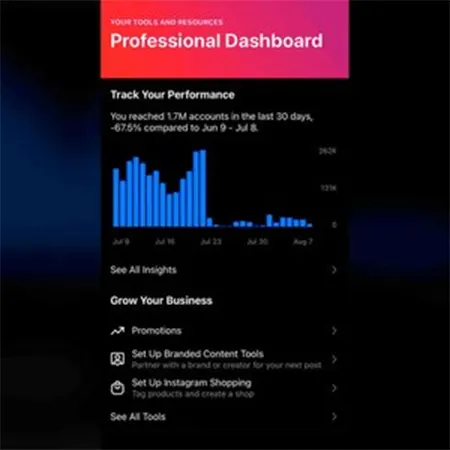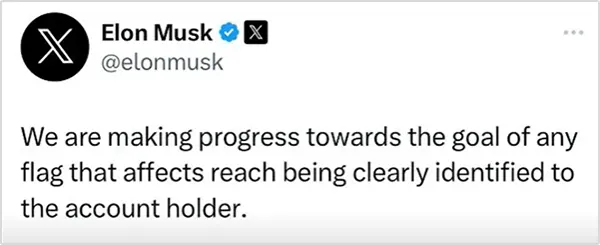Have you ever faced or heard of a sudden fall in general engagement on your Instagram despite posting at the best time possible?
This could be shadowbanning, a secret technique of social media platforms. The shadow ban meaning is algorithmic curtailing of the engagement of one’s account and content, inducing a limited or lower reach of one’s respective posts.
Also called silent censoring, it is a discretionary attempt by social media platforms to make the account largely invisible to other users.
What Does Shadow Banning Mean?
The shadow ban meaning is defined as intentionally shrinking or ceasing the level of engagement of an account or posts on a specific topic. However, its proper meaning has changed over time.
Initially, it meant a deceptive suspension of an account. Gradually, it began to be stated differently by including downranking and delisting, which do not outright conceal the content but diminish their chances of appearance to the online audience.
Getting more precise in its definition, renowned digital marketer Neil Patel defines it as “when your social media posts can no longer be viewed by other users.”
Tarleton Gillespie, author of the book “Custodians of the Internet,” has also affirmed that “Shadowbanning is the conceptual counterpart to the platform’s amplification of problematic content for the sake of boosting engagement through recommender algorithms. ”
After decoding its meaning, let’s move to its crucial features, which are worth discussing.
Key Features
The essence of this type of ban depicts its nature. Although there is less information available about it, its basic character portrays the following features:
- Invisible Restrictions: The users generally face a fall in engagement due to invisible restrictions, such as content not visible in the feeds, the account not seen in the search results, etc.
- User Perception: The user is largely unaware of it. Hence, the overall performance drops without any change in the content structuring strategy by the account owner.
- Platform Policies: Every platform has a certain set of guidelines and rules catalogued in the form of a policy to maintain decency and propriety in content sharing. Contravening them can trigger shadowbanning by the platform.
These characteristics make the shadow ban different from the traditional bans.
Signs You Might Be Shadow Banned
Getting a shadow ban is an undisclosed and uninformed process. If you are confused about how to know if you are shadow banned, there are certain implicit signs that hint at its occurrence.
Let’s discuss them sequentially.
1. Decreased Engagement or Reach
The account faces an abrupt decrease in general social media engagement. This induces a crash in the people’s response to the content, as it becomes invisible to other users.

Eventually, the content reach gets affected, and the follower counts will fluctuate or possibly decrease.
2. Content Visibility Issues
When shadow-banned, the content’s reach is either reduced or completely disappears from the feeds of the people. This contracts the people’s response, thus impacting the performance of the account. Although the content is accessible, it doesn’t get any boost from the platform’s algorithm.
3. Difficulty in Searchability for Hashtags or Profiles.
There have been reports of a reduction in the search results of certain hashtags and profiles of the users posting content that contravenes the platform guidelines.
Social platforms such as Instagram also make the profile of the owner invisible to the people. Instagram bans the hashtags that are not allowed to be used, and using them in your post will attract a restrictive response from the platform’s algorithm.
These factors have raised concerns over the ethical use of such platforms, thus drawing public discontent and controversies.
Platforms and Their Shadow Ban Policies
The shadow ban practice has been employed by many social media giants to change the content’s popularity on their platforms.
Here is a brief account of such practices used by some famous social media platforms:
1. Instagram: Common Triggers and Resolutions
Being one of the most used social media platforms, Instagram has been reported to use this ban. As Instagram often updates its algorithm, it impacts the engagement rate, making the users oblivious to the content engagement trends.
Concerning this ban, here are some of its common triggers:
- Accounts are often reported.
- Using broken or banned hashtags.

- Installing bots or growth tools can be spammy.
- Inauthentic practices such as incorporating scores of hashtags or buying followers, likes, and comments.
To counter the shadow banning on Instagram, a user is required to maintain passivity over the platform for some days or weeks and revamp the strategy to make it adhere to the community guidelines.
2. X: Suspected Practices and Official Stance
X (formerly Twitter) is a popular microblogging site. To maintain community discipline, it has started labelling the accounts, which indicate suspicious activities and can be a hint of a shadow ban meaning on X.


Some common practices instigating labelling are:
- Spreading misinformation.
- Violating the content policy.
- Content reported by many people.
- Content published by manipulative media.
In this direction, the official response to labelling has been released, which goes as follows:

This indicates that the platform has been dedicated to maintaining parity in content reach and sharing.
3. TikTok: Alleged Restrictions and Community Response
TikTok has captivated people through its short video-sharing feature. However, certain unauthorized activities attract restrictions without outright banning the account.
Some resections faced by the users are:
- The post or the account is not visible to other people.
- Sudden falls in likes, shares, and comments on the content.
- Restrictions in video uploading (may show processing or under review).
There have been some reports of shadow-banning of disruptive content, such as extreme stunts, criminal trends, body-shaming, or abusive clips.
In light of such responses from TikTok, users can take a glance at its community guidelines to comply with them.
4. Reddit: Subreddit Shadow-bans and Moderation Policies
Reddit has been accused of using this strategy for a decade, back in 2012, when Reddit users alleged that the platform was banning the links to a Gawker article.
A few years later, the site was suspected of taking action against the users who broke the Reddit rules. It responded by hiding their posts and openly shadowbanning them.
Later, in 2015, it changed its policy and moved to account suspension and refuted the use of this ban.
The above stances by Reddit have been rooted in its moderation policy. Its moderator code of conduct exhibits a comprehensive set of rules and ethical norms to be abided by by the moderators of the platform. Committing to this code of conduct will prevent the user from attracting any bans or restrictions.
How to Avoid Being Shadow Banned?
Although there is limited information about it, following some crucial steps can keep you away from its impact.
1. Best Practices for Compliance with Community Guidelines
The community guidelines are the blueprint for how decorum is to be maintained on the platform. Following them keeps the user’s content in accordance with the demands of the platform.
Some of the best practices for compliance with community guidelines are:
- Publish content in accordance with the community guidelines.
- Increase public trust with engagement.
- Avoid sharing posts containing extreme content, such as vulgarity, cruelty, nudity, etc.
- Refrain from hate speech and maintain a decent tone of interaction.
These best practices will be instrumental in aligning the content with the community guidelines.
2. Tips to Maintain Organic Engagement
To grasp the crux of the shadow ban meaning, the popular digital marketer Neil Patel has mentioned certain points to keep in mind to avoid this ban. Out of them, some prominent ones are:
- Refrain from posting illegal topics.
- Avoid making content that attracts negative responses from people, such as mutes, blocks, or reports from the public.
- Do not copy and paste a link or content over and over again, and don’t post spam.
- Abstain from using the banned hashtags in the posts.
Following these suggestions will keep the account out of the scope of the shadow ban.
3. Tools to Analyze Content Performance and Detect Issues
Tracking the content performance and detecting and addressing its issues helps to keep the account alive. This can be simplified by using some tools that can gauge the overall reach of the account and provide significant insights. Some of these tools are:
- Google Analytics
- Google search console
- Ahref
- Semrush
- Yoast
Certain content auditing tools are also recommended, which can trace the strengths and weaknesses in the content and will help in structuring an accepted and welcomed post. The 2 most prominent content auditing tools are:
- MARKETMUSE: It uses AI algorithms to analyze the content and provides significant insights into the strengths, content gap, and areas for improvement.
- Grammarly: This widely used tool also leverages AI technology to fine-tune the content quality by finding grammatical errors, suggesting rephrasing of the piece of speech, and also providing tone adjustment in the content.
The above tools will facilitate the account holders in averting the chances of being shadowbanned.
But what if your account still encounters it?
Let’s address it too.
How to Recover from Shadow Ban?
Unfortunately, if you are trapped, how will you recover from shadow ban? To offer you a quick guide, here are some pivotal discussion points revolving around this issue.
1. Steps to Identify the Shadow-ban
Users encountering the shadow ban will not receive any intimation of being caught under it. However, checking for some common changes will help them decipher their occurrence.
- Check for the account engagement stats: Every social media platform provides an internal tool or interface to gauge and analyze the social engagement of the content. A sudden drop in it without any intimation or account ban can be a hint of the account being shadow-banned.
- Use external tools: Some online tools, such as Spikerz shadow-ban calculators, provide vivid insights into the overall account performance and can indicate shadow-banning.
- Conducting manual checks: The user can check for their account and content on the platform or ask their followers or known people to search for it. If the search results do not show the desired content, it signifies the shadow-banning of your account.
2. Appealing to Platforms or Revising Content Strategies
If the account has been brought under its scope, users are required to recalibrate their content strategy by inculcating the following suggestions:
- Revise content strategy.
- Stop using any growth tool or bot.
- Never go with unauthorized practices such as paying for likes, follows, or comments.
- Avoid using the banned hashtags.
- Take a break from uploading content.
- Read, understand, and adhere to the terms of use, community guidelines, and recommendation guidelines of the platforms.
- Refrain from posting non-permissible or misleading information.
These crisp and clear recommendations will help users neutralize its impact.
However, some other broad changes are also required to be introduced.
3. Waiting Period Behavioral Adjustments
The shadow-ban is not an enduring penalty. It takes some time for the accounts and posts to regain their past reach and popularity.
For example, the popular gaming platform ACTIVISION shadow bans an account for 7 to 14 days for breaching the gaming rules, guidelines, and terms of service.
Though not explicitly mentioned on any platform, the shadow ban is generally a short-term punishment, which is lifted after a few days to weeks.
This time gap can be productively used by the account holder to tailor their content strategy to adapt to the practices conforming to the moderation policy of the platform.
Controversies Around Shadow Banning
The underlying process of shadowban has been undisclosed since its inception, which has generated a debate on the transparency and fairness of its application.
1. Arguments For and Against Shadow-Banning Practices
Like every concept, technique, and process, the shadow ban is also favoured and disfavored for certain reasons.
Arguments for:
- Maintaining decorum on social media platforms.
- Curbing the spread of disruptive and instigative content.
Arguments against:
- Questioning about accountability and reduced trust over social media platforms.
- Being an uninformed and impactful response, it can annoy the users by disincentivizing them.
- Leading to opinion and sentiment censoring.
- Standing against freedom of speech.
Considering the above points, it is apparent that the platforms should be mindful of the inconvenience caused to the users by this uninformed and unobservable ban.
2. Notable Cases and Public Backlash
The public discontent is conspicuous from the social media trends and the popular accusations and allegations.
This resentment can be traced back to 2012, when Reddit users accused the platform of banning links to Gawker Articles.
In recent times, several cases of accounts being shadowbanned for posting content about Palestine have surfaced.
These backlashes have been responded to by a few platforms by releasing statements. However, no concrete outcome has been reached till now.
Conclusion
In a nutshell, if your course of action and engagement vary, it’s high time to accept that you are shadow-banned. Before jumping to any conclusion, take a detailed look at whether the ban is temporary or permanent. If you are lucky enough, most shadowbans are temporary.
But finding the reason and when it happened can be a tricky job. Moreover, check your activities and current posts to recognize the mistakes from your end, and try to fix them as soon as possible and avoid indulging in controversial acts in the future.
FAQs About Shadow Banning
Can a shadow ban be permanent?
No, it is a temporary restriction enforced by the platform on certain accounts that violate their policy guidelines.
Why do platforms deny shadow-banning practices?
The platforms deny shadow banning accounts and content to portray their policy of equal subjection for all content. Accepting it will further spark the claims of bias, which media platforms refrain from indulging in.
Is shadow-banning legal?
It is neither completely legal nor illegal but lies in the grey area. For example, the EU Digital Services Act prohibits shadow-banning practices but allows a few exceptions.






